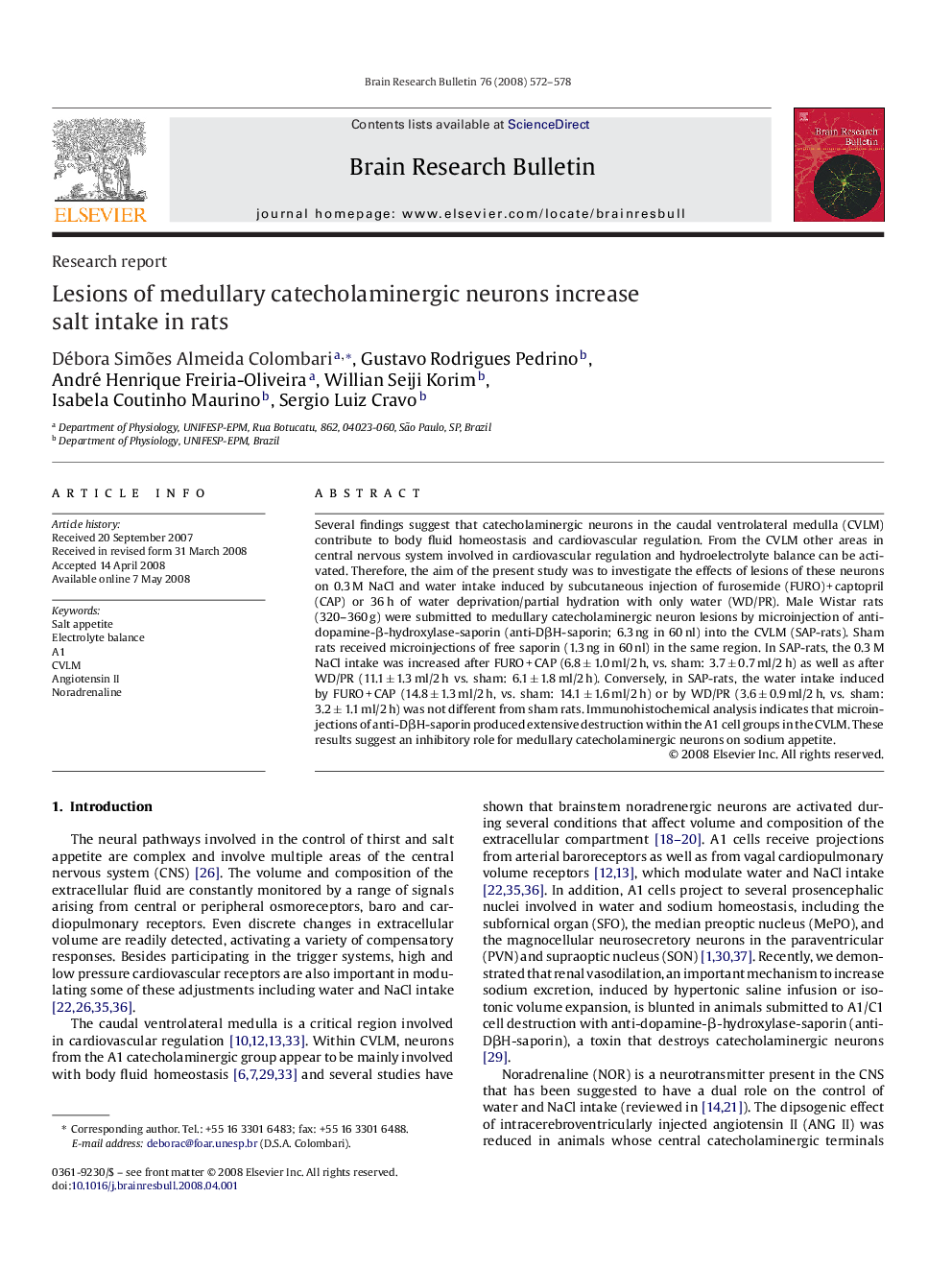| Article ID | Journal | Published Year | Pages | File Type |
|---|---|---|---|---|
| 4319635 | Brain Research Bulletin | 2008 | 7 Pages |
Several findings suggest that catecholaminergic neurons in the caudal ventrolateral medulla (CVLM) contribute to body fluid homeostasis and cardiovascular regulation. From the CVLM other areas in central nervous system involved in cardiovascular regulation and hydroelectrolyte balance can be activated. Therefore, the aim of the present study was to investigate the effects of lesions of these neurons on 0.3 M NaCl and water intake induced by subcutaneous injection of furosemide (FURO) + captopril (CAP) or 36 h of water deprivation/partial hydration with only water (WD/PR). Male Wistar rats (320–360 g) were submitted to medullary catecholaminergic neuron lesions by microinjection of anti-dopamine-β-hydroxylase-saporin (anti-DβH-saporin; 6.3 ng in 60 nl) into the CVLM (SAP-rats). Sham rats received microinjections of free saporin (1.3 ng in 60 nl) in the same region. In SAP-rats, the 0.3 M NaCl intake was increased after FURO + CAP (6.8 ± 1.0 ml/2 h, vs. sham: 3.7 ± 0.7 ml/2 h) as well as after WD/PR (11.1 ± 1.3 ml/2 h vs. sham: 6.1 ± 1.8 ml/2 h). Conversely, in SAP-rats, the water intake induced by FURO + CAP (14.8 ± 1.3 ml/2 h, vs. sham: 14.1 ± 1.6 ml/2 h) or by WD/PR (3.6 ± 0.9 ml/2 h, vs. sham: 3.2 ± 1.1 ml/2 h) was not different from sham rats. Immunohistochemical analysis indicates that microinjections of anti-DβH-saporin produced extensive destruction within the A1 cell groups in the CVLM. These results suggest an inhibitory role for medullary catecholaminergic neurons on sodium appetite.
